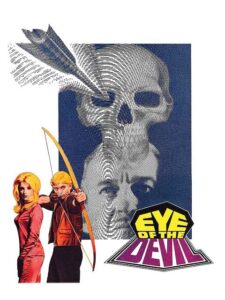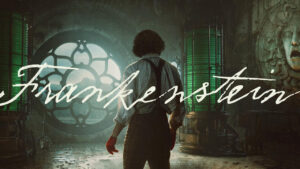.
I was listening to one of my many horror movie podcasts the other day when during a discussion of folk horror films one of the hosts mentioned such a film starring David Niven.
David Niven? Horror movie?
That’s a pairing of words I had not expected at all. This was one folk horror I had to see. Unfortunately for me in their discussion the podcast did give away the turn in the movie so it was less impactful than it might have been.
Adapted from the novel Day of the Arrow, Eye of the Devil stars David Niven as Philippe de Montfaucon the Marquis de Bellenac at an old and isolated French estate where the people hold strange rituals and customs. Philippe is called back to the estate as the grape harvest has failed for the third year in a row and he implores his wife, Catherine (Deborah Kerr) to stay behind in the city. Catherine, of course, does not stay behind but follows her husband, bringing along their two children, to the estate. Almost immediately upon arrival Catherine is terrorized by a pair of apparently psychotic siblings, Odile (Sharon Tate, here credited as ‘Introducing Sharon Tate) and Christian (David Hemmings). With her husband’s behavior growing odd and the country folk of the estate apparently intent on frightening her away, Catherine engages in an investigation to discover the truth behind those strange customs and secrets of the ancient estate.
I did not dislike this movie, but it is very hard for me to judge the film since the secret that Catherine, our true protagonist, is seeking to discover is the very thing revealed by the podcast. This is a movie whose engine turns on a single question, What is Going On, and if the answer is known ahead of time, or guessed accurately too soon, then there is little to no narrative weight or momentum keeping the viewer’s attention.
Niven and Kerr are fine in the film, turning in decent performances, but Kerr’s Catherine begins to have repeated scenes making the film feel dull and expanding the sense of its running time which is a mere 96 minutes. Sharon Tate is quite good here as the mysterious and dangerous sister. With very little dialogue Tate conveys menace with a look and her bearing.
I find it hard to recommend Eye of the Devil but it’s also hard to disentangle how much of my non-enjoyment stemmed from the ‘spoiler’ versus how much the film’s pacing simply plodded.




